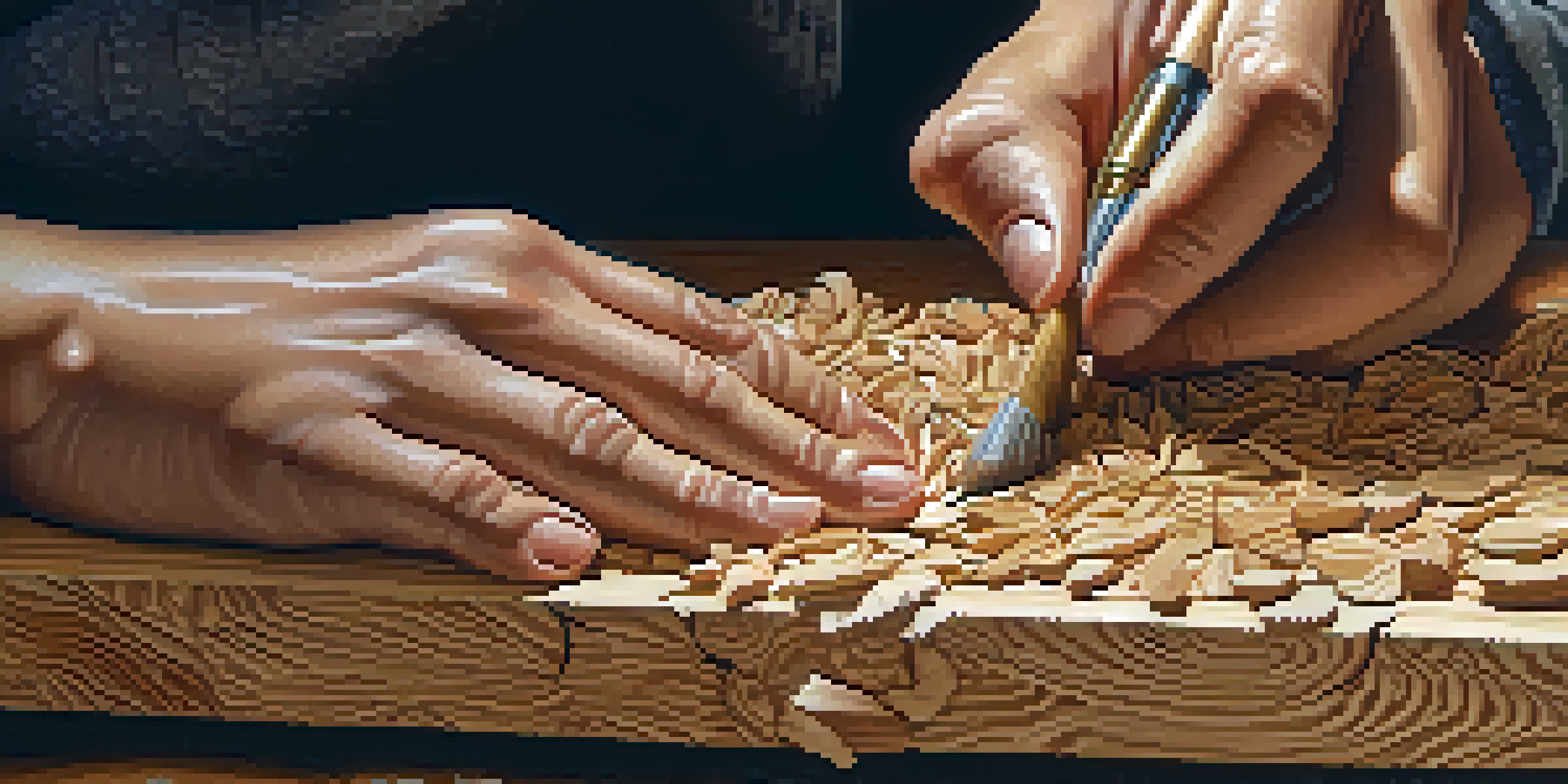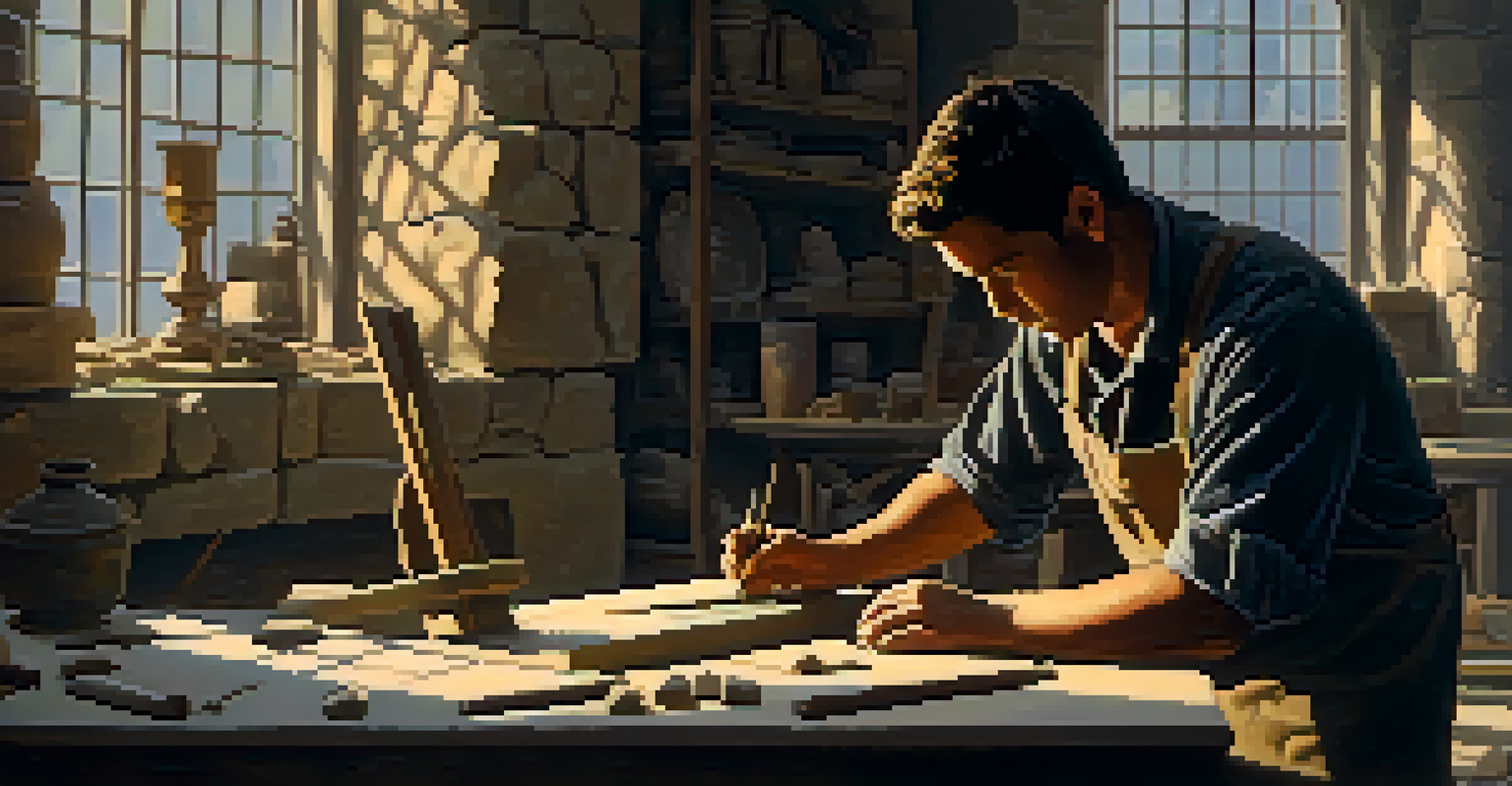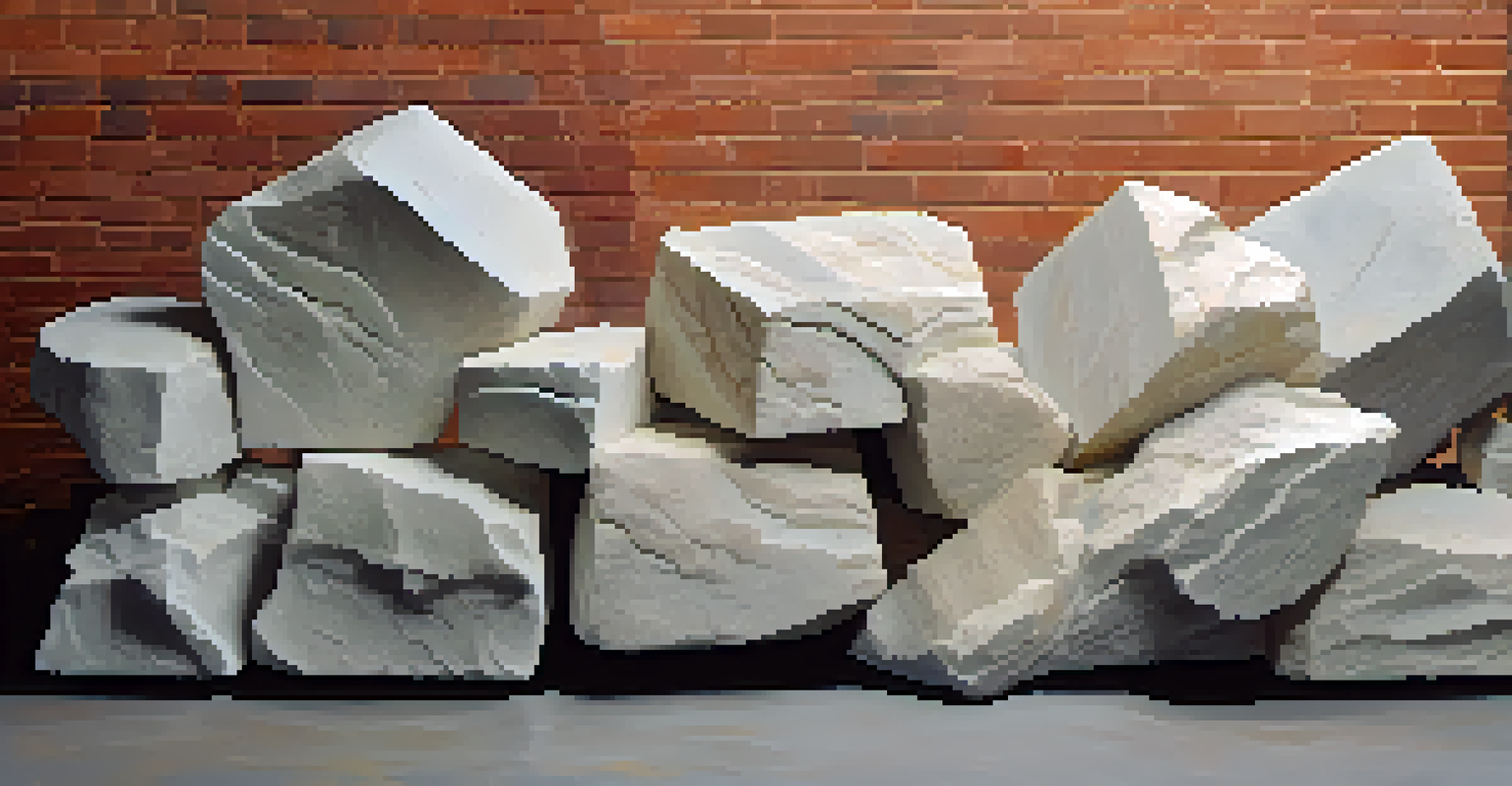Cinematic Techniques in Depicting the Art of Carving

The Beauty of Carving: An Artistic Journey
Carving is not just a craft; it's an art form that tells a story. From wood to stone, the transformation of raw materials into intricate designs captures the essence of creativity. Cinematic techniques can elevate this process, allowing viewers to appreciate the skill and dedication involved in every cut.
Art is not freedom from discipline, but disciplined freedom.
By focusing on the artist's hands and the tools they wield, filmmakers can create a visceral connection between the audience and the carving process. Close-ups highlight the precision required, making the viewer feel as if they are part of the journey. This immersive approach captures the beauty in each stroke, emphasizing the art's delicacy.
Moreover, the narrative of carving can be enriched through visual storytelling. By weaving in the artist's background and inspiration, films can showcase the emotional depth behind each piece. This not only engages the audience but also fosters a greater appreciation for the craftsmanship.
Lighting and Shadows: Creating Depth in Carving
Lighting plays a crucial role in how carving is perceived on screen. The interplay of light and shadow can enhance the textures and intricacies of the carved surfaces. By strategically placing lights, filmmakers can draw attention to specific details, making the artwork come alive.

For example, using soft lighting can create a serene mood, allowing the viewer to focus on the gentle curves and delicate features of a piece. In contrast, harsher lighting can create drama, highlighting the bold aspects of a carving. This visual contrast not only captures the viewer's attention but also mirrors the emotional journey of the artist.
Cinematic Techniques Enhance Carving
Filmmakers use various cinematic techniques, such as lighting and sound design, to deepen the audience's connection to the art of carving.
Additionally, shadows can add layers of meaning. They can symbolize the challenges faced by the artist or the passage of time in the creation process. By manipulating light and shadow, filmmakers can craft a richer narrative that resonates with the audience.
Camera Angles: Shaping the Viewer’s Perspective
The choice of camera angles can significantly impact how carving is perceived in film. A low-angle shot can empower the artist, showcasing their skill and dedication. Conversely, a high-angle shot can create a sense of vulnerability, reflecting the challenges they face in their craft.
Every artist dips his brush in his own soul, and paints his own nature into his pictures.
Dynamic angles, such as Dutch tilts, can inject energy into the scene, mirroring the intensity of the carving process. This technique can make the viewer feel the excitement and passion involved in creating art. It's a way of visually narrating the artist's emotional state, connecting the audience to the experience.
Moreover, wide shots can establish the environment in which the carving takes place, setting the tone and context. By capturing both the artist and their surroundings, filmmakers provide insight into the inspiration behind the work, making the art more relatable and engaging.
Sound Design: The Symphony of Carving
Sound design is often an underappreciated element in filmmaking, yet it plays a pivotal role in depicting the art of carving. The rhythmic sound of chisels hitting stone or the scrape of a knife against wood can transport viewers into the workshop. These sounds create an auditory landscape that enhances the visual experience.
Incorporating ambient sounds, like the rustle of tools or the subtle echo of a workshop, adds layers to the narrative. It immerses the audience, making them feel as if they are right there with the artist. This connection deepens their appreciation for the painstaking effort that goes into every piece.
Symbolism Adds Depth to Carving
Incorporating visual metaphors and symbols allows viewers to engage with the narrative on multiple levels, enriching their understanding of the artwork.
Additionally, sound can evoke emotions. A soft, melodic score during a carving scene can evoke a sense of peace, while more intense music can highlight the struggles and triumphs faced by the artist. This auditory element enriches the storytelling, creating a more holistic viewing experience.
Editing Techniques: Crafting the Art of Carving Narrative
Editing is where the magic happens, allowing filmmakers to shape the story of carving. The pace of cuts can reflect the rhythm of the carving process, with quick edits during intense moments and slower cuts for more contemplative scenes. This manipulation of time keeps the audience engaged.
Montage sequences can also effectively showcase the progression of a carving from start to finish. By juxtaposing different stages of the process, viewers can appreciate the journey and transformation that takes place. This technique not only emphasizes the skill involved but also creates a visual narrative that resonates.
Furthermore, transitions between scenes can mirror the transitions in the carving process. Fade-ins and fade-outs can signify moments of reflection or inspiration, adding depth to the story being told. Thoughtful editing ensures that the art of carving is communicated not just through visuals, but through a cohesive narrative.
Symbolism in Carving: An Artistic Language
Carving often holds symbolic meanings, and filmmakers can enhance this by incorporating visual metaphors. For instance, a carving of a tree may symbolize growth and resilience, while a figure of a bird could represent freedom. By showcasing these symbols, the narrative deepens, inviting viewers to interpret the art on multiple levels.
Cinematic techniques can highlight these symbols through careful framing and composition. By placing the carved piece in a context that reflects its meaning, filmmakers can create a powerful connection between the art and the story. This not only engages the audience's imagination but also encourages them to reflect on the deeper messages behind the pieces.
Editing Shapes the Carving Narrative
Effective editing techniques, like montages and thoughtful transitions, help convey the journey and transformation involved in the carving process.
When these symbols are woven into the narrative, they add layers of complexity. They invite viewers to explore their interpretations, enriching their experience and fostering a deeper appreciation for the art of carving.
The Final Cut: Celebrating the Art of Carving
In conclusion, cinematic techniques play a vital role in showcasing the art of carving. From lighting to sound design, each element contributes to a richer understanding of the craft. By employing these techniques, filmmakers can create a captivating narrative that not only entertains but also educates the audience about the intricacies of carving.
Moreover, these techniques bridge the gap between the artist and the viewer, allowing for a more profound connection. When audiences see the dedication and skill involved, they are inspired to appreciate the artistry behind each piece. This celebration of craftsmanship fosters a greater respect for the art of carving.

Ultimately, the marriage of cinematic techniques and carving art creates a powerful storytelling experience. It transforms a simple depiction of craft into a narrative that resonates, leaving a lasting impression on viewers and enriching their understanding of this beautiful art form.